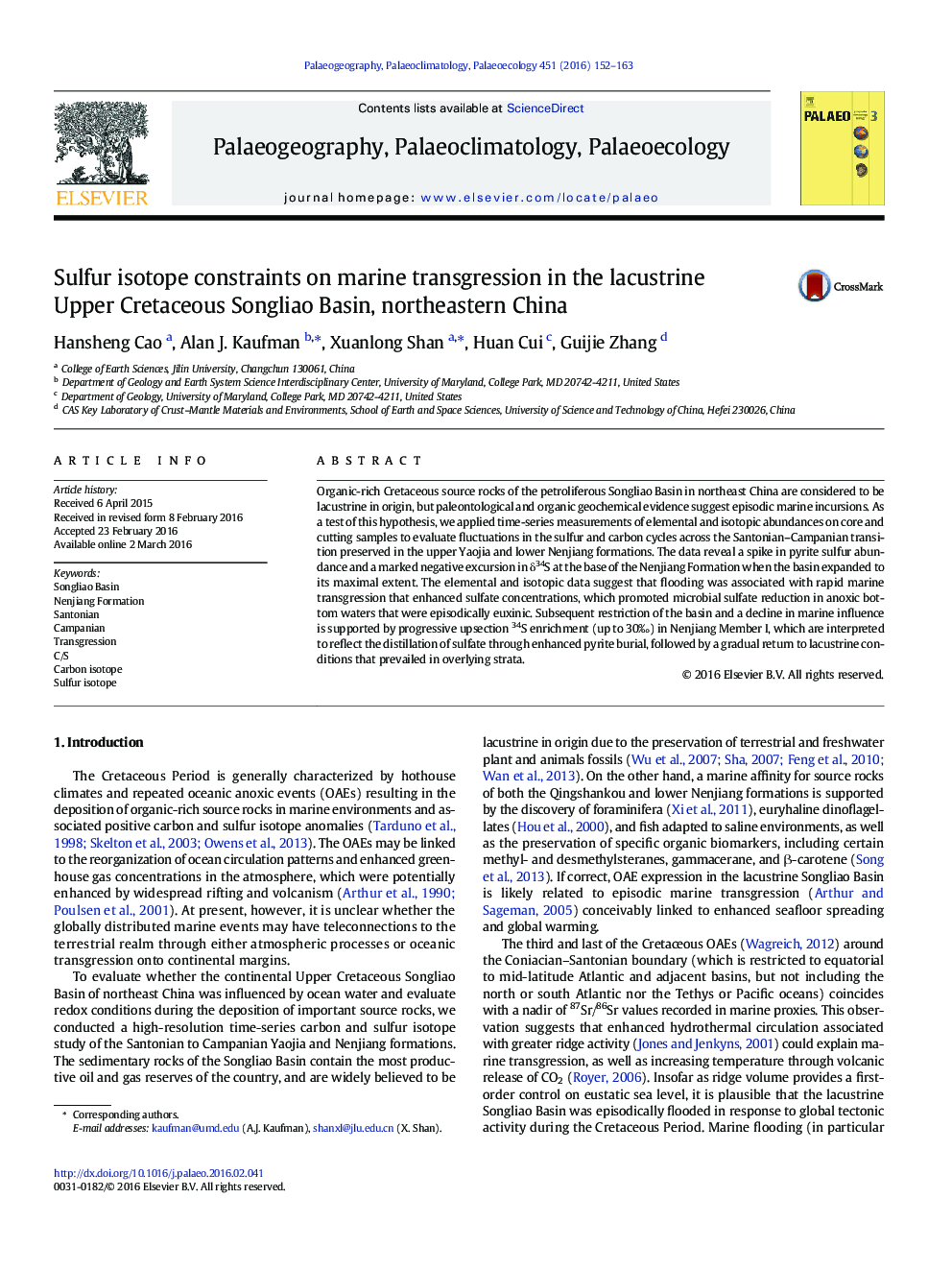| Article ID | Journal | Published Year | Pages | File Type |
|---|---|---|---|---|
| 4465723 | Palaeogeography, Palaeoclimatology, Palaeoecology | 2016 | 12 Pages |
•Geochemical study of oil-bearing Late Cretaceous lacustrine sediments in China.•Elemental and sulfur isotope profiles show episodic marine transgression into basin.•Sulfate loading in lower Nenjiang Formation stimulated microbial sulfate reduction.•Results are consistent with paleontological and biomarker studies through interval.•Conceptual model supports teleconnection between marine and terrestrial realms.
Organic-rich Cretaceous source rocks of the petroliferous Songliao Basin in northeast China are considered to be lacustrine in origin, but paleontological and organic geochemical evidence suggest episodic marine incursions. As a test of this hypothesis, we applied time-series measurements of elemental and isotopic abundances on core and cutting samples to evaluate fluctuations in the sulfur and carbon cycles across the Santonian–Campanian transition preserved in the upper Yaojia and lower Nenjiang formations. The data reveal a spike in pyrite sulfur abundance and a marked negative excursion in δ34S at the base of the Nenjiang Formation when the basin expanded to its maximal extent. The elemental and isotopic data suggest that flooding was associated with rapid marine transgression that enhanced sulfate concentrations, which promoted microbial sulfate reduction in anoxic bottom waters that were episodically euxinic. Subsequent restriction of the basin and a decline in marine influence is supported by progressive upsection 34S enrichment (up to 30‰) in Nenjiang Member I, which are interpreted to reflect the distillation of sulfate through enhanced pyrite burial, followed by a gradual return to lacustrine conditions that prevailed in overlying strata.
